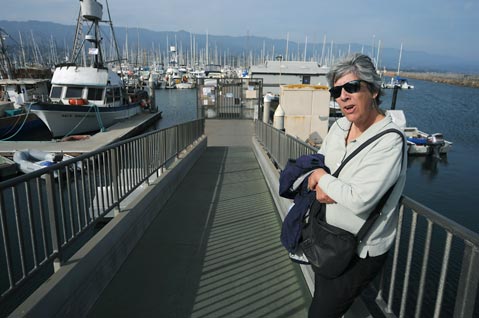Fiscal Shellgame
Boat Owners Protest Slip Fee Increase

With the City of Santa Barbara confronting a $10.5 million budget shortfall, it’s little wonder that elected officials and city administrators alike might find themselves accused of robbing Peter to pay Paul. That charge was leveled repeatedly Monday afternoon in response to a proposal-initiated by City Administrator Jim Armstrong-to shift the burden of paying for city lifeguards, waterfront bathroom maintenance, and Fourth of July festivities from the city’s Parks & Recreation Department-which has traditionally shouldered such expenditures-to the city’s Waterfront Department. Under contention is a plan to exact $250,000 from Waterfront and give it to Parks, which is slated for $1.6 million in cuts even with the new infusion of cash. Especially contentious is the proposal to make the waterfront pay $140,000 to the Parks Department for lifeguard services. “You don’t station lifeguards in the harbor,” objected Harbor Commissioner Charlie Watson. “Boat owners are not a cash cow,” complained boat owner Laurie Rafferty. “Boaters don’t use beaches, lifeguards, or bathrooms,” argued Gary Longaberger, who lives aboard his boat.
Boat owners worry these additional costs can be paid for only by increasing the slip fees they pay the Waterfront Department. They- along with City Councilmember Iya Falcone- objected that not all boat owners were wealthy. “This is not about rich yacht owners,” Falcone said. “These are regular folk. Some live aboard; most are working families.” But Falcone also said Waterfront should reimburse Parks the cost of cleaning the three waterfront restrooms. Grudgingly, she acknowledged Waterfront should pay for the Fourth of July. “But I can’t do lifeguards,” she insisted. “I don’t think it’s fair to raise slip fees to pay for recreational activity.”
Falcone pointed out Waterfront is an “enterprise fund,” meaning it raises its revenues without help from the city’s General Fund. As such, she said, Waterfront could not legally subsidize activities traditionally paid for by the General Fund, such as lifeguards. When Scott Vincent, assistant city attorney, sought to explain that the new arrangement was, in fact, legal, Falcone replied, “I am particularly not moved.”
Leading the charge in favor of the funding shift were councilmembers Helene SchneiÂ-der-against whom Falcone is running for mayor this November-and Das Williams. These two worry that the Parks & Recreation Department would have to cut even more recreation programs designed to keep youth out of gangs without the injection of Waterfront cash. They counter that Waterfront has been effectively subsidized by the General Fund ever since its inception in 1980 in the form of an interest-free loan of $1.1 million. They claim that translates to $65,000 a year in lost interest and $18 million since 1980. Furthermore, they argue that any activity-Fourth of July festivities, for example-that draws people to the waterfront benefits the Waterfront Department. To the extent Parks & Rec helps attract people to the area-by cleaning bathrooms, for example-it should get a cut of the revenues collected from waterfront diners, shoppers, and parkers.
Several live-aboards expressed concern they might be economically evicted by higher slip fees. They acknowledged the slip fees charged in Santa Barbara were cheaper than most coastal marinas, but cautioned against bringing the fees up to market rates. That, they said, should be held in reserve should the federal government stop paying the $2 million annual cost of harbor dredging. Councilmember Grant House responded that the 100 live-aboards in the harbor should probably be exempt from any slip fee increases. He noted that the 4-percent increase in slip fees proposed to help offset the new charges averaged out to an additional $127 per year per boat owner. That, he said, translated to $10 extra a month. And even without the additional new charges born of this year’s budget crisis, slip fees had been projected to increase 2 percent anyway, roughly $5 a month.



